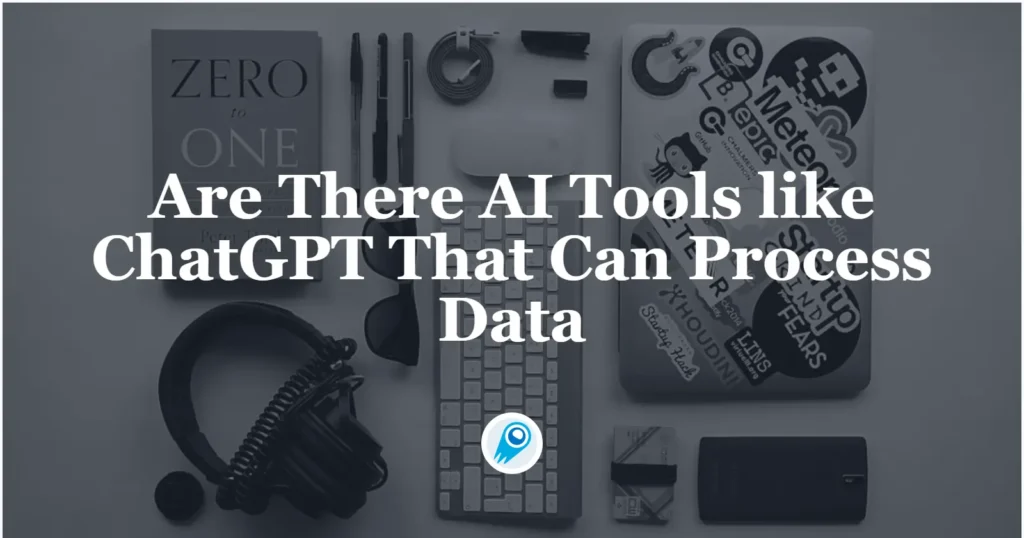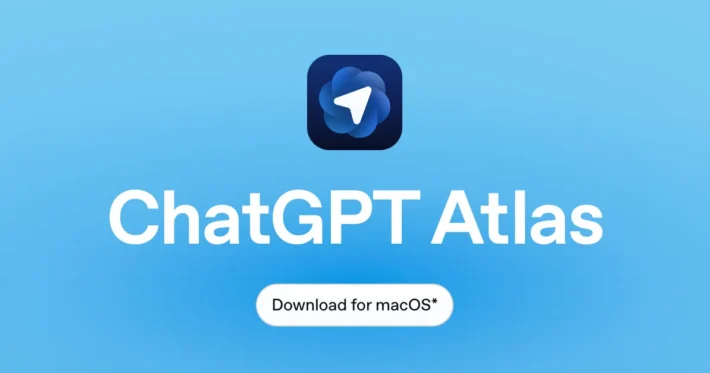Are There AI Tools like ChatGPT That Can Process Data

AI is no longer confined to chatbots and creative assistants—it’s rapidly becoming a central pillar for processing, analyzing, and extracting insights from complex datasets. Organizations of all sizes are exploring whether tools like ChatGPT can handle not only conversation but also heavy-duty data tasks. In this article, we’ll examine the leading AI offerings, compare their capabilities, explore underlying hardware and infrastructure trends, and discuss the challenges and best practices for adopting AI data‑processing solutions.
What AI tools are capable of processing and analyzing data beyond conversation?
ChatGPT’s Advanced Data Analysis
OpenAI’s Advanced Data Analysis (formerly Code Interpreter) equips ChatGPT with the ability to ingest CSVs, JSON files, and other structured data formats, performing tasks such as statistical summaries, data cleaning, and chart generation. Users simply upload a file and pose natural‑language queries—ChatGPT then writes and executes code behind the scenes to return tables, visualizations, or narrative insights. This feature has become a cornerstone for analysts who need rapid prototyping of data pipelines without manual scripting .
OpenAI’s ChatGPT Agent
Beyond the core chatbot, OpenAI recently launched ChatGPT Agent for Pro, Plus, and Team subscribers. Agents combine web browsing, research synthesis, terminal access, and integrations (e.g., Gmail, GitHub) to automate multi‑step data workflows—such as competitor analysis or event planning. Early benchmarks show strong performance on complex tasks, demonstrating that agents can autonomously fetch and process data from APIs and web sources, then compile comprehensive reports.
Google’s Gemini and Opal
Google’s Gemini ecosystem now includes Opal, a dedicated “data agent” capable of real‑time data querying over Google Cloud Storage and BigQuery. Opal leverages Gemini’s multimodal intelligence to interpret both natural language and structured query languages (SQL), delivering visual dashboards and narrative explanations. This tight integration with Google’s scalable data warehouse makes Opal especially appealing for enterprises already invested in Google Cloud .
Anthropic’s Claude Code Subagents
Anthropic has introduced “subagents” within Claude Code—specialized AI entities each fine‑tuned for discrete tasks. For example, one subagent might specialize in ETL (extract, transform, load) operations, while another focuses on statistical modeling. Users orchestrate these subagents through a master prompt, enabling a modular approach to data pipelines. Early adopters report reduced error rates in data cleaning and more transparent audit trails compared to monolithic AI models.
Specialized AI Data Platforms
Beyond generalist chat‑based tools, several purpose‑built platforms have emerged:
- IBM Watson Discovery uses natural‑language queries and machine learning to uncover patterns and anomalies across enterprise datasets, combining NLP with graph analytics for deeper insights.
- Microsoft Fabric with Copilot integrates AI directly into Power BI and Synapse, enabling users to ask Copilot questions about their datasets and instantly generate dashboards or dataflows.
- Amazon QuickSight Q provides ML‑driven insights on AWS data sources; users can ask business questions in plain English and receive auto‑generated visualizations.
- Snowflake’s Snowpark recently added AI connectors that allow external LLMs to run code close to the data, reducing data movement and latency.
These platforms cater to large‑scale, regulated environments where governance, security, and integration are paramount.
How do these AI data processing tools compare in performance and use cases?
Usability and Integration
Generalist tools like ChatGPT excel in ease‑of‑use—nontechnical users can jump in immediately with file uploads or simple prompts. However, enterprise platforms (e.g., Microsoft Fabric, IBM Watson) offer tighter integration with existing BI ecosystems, advanced access controls, and collaboration features. Google Opal strikes a middle ground by embedding within BigQuery, giving data engineers SQL‑savvy controls alongside conversational queries .
Data Security and Privacy
Data confidentiality is a critical concern. ChatGPT’s cloud‑hosted analysis runs code on OpenAI servers, raising questions about data residency and compliance with regulations such as GDPR or HIPAA. In contrast, on‑premises or private‑cloud deployments—offered by IBM Watson, Microsoft Fabric, and Snowflake—allow organizations to maintain full control over their datasets. Anthropic also offers a private enclave option for customers handling sensitive information.
Scalability and Performance
For massive datasets (hundreds of gigabytes to terabytes), dedicated solutions like Google BigQuery with Opal or Snowflake with Snowpark outperform generalist LLM‑based approaches. These platforms distribute query execution across clusters optimized for OLAP workloads. Meanwhile, ChatGPT’s Advanced Data Analysis is best suited for sample datasets or iterative analysis rather than high‑volume batch processing .
Pricing Models
- ChatGPT ADA: Charged per token/computation time; costs can escalate with large datasets or complex code execution.
- OpenAI Agents: Monthly subscription tiers plus usage‑based fees for external API calls.
- Google Opal: Billed via standard BigQuery compute pricing.
- AWS QuickSight Q: Pay‑per‑session plus per‑query charges.
- Microsoft Fabric: Included in certain E5 and Fabric SKUs; additional capacity units required for heavy workloads.
Organizations must weigh subscription costs against infrastructure and personnel expenses to find the optimal balance.
What new developments in AI hardware and infrastructure support data processing?
Broadcom’s AI Networking Chips
To meet mounting AI workload demands, Broadcom unveiled a family of AI networking chips designed for high‑speed, low‑power interconnects within data centers. These chips optimize data throughput between GPUs and storage nodes, reducing bottlenecks in distributed training and inference of large models. By minimizing latency and energy consumption, Broadcom’s solutions promise improved performance for real‑time data processing tasks.
Meta’s AI Infrastructure Investments
Meta Platforms announced a $68 billion capital investment into AI hardware and datacenter expansion for 2025, aiming to support billions of inference requests daily. Their internal “AI superhighway” architecture connects thousands of accelerators with custom silicon, enabling in‑house tools—like recommendation engines and generative media pipelines—to scale seamlessly. Meta’s infrastructure also serves as the backbone for AI‑powered analytics across Facebook, Instagram, and WhatsApp, demonstrating the company’s commitment to AI‑driven monetization.
Cloud Provider Innovations
All major cloud vendors continue to introduce specialized instances—such as AWS’s Trainium and Inferentia chips, Google’s TPU v5 pods, and Azure’s ND‑series GPUs—all optimized for AI workloads. These dedicated accelerators, paired with high‑bandwidth fabrics and NVMe storage, empower organizations to process large volumes of data with minimal custom hardware investment.
What challenges and ethical considerations arise from using AI for data processing?
Data Privacy and Confidentiality
When sensitive customer or patient data is involved, sending raw datasets to third‑party LLM providers can violate privacy regulations. Enterprises must implement data‑minimization, anonymization, or deploy on‑prem/private‑cloud models. Additionally, audit logs and access controls are essential to track who used AI agents and for what purpose .
Bias and Fairness
AI models trained on broad internet corpora may inadvertently perpetuate biases in data analysis—misrepresenting demographic trends or misclassifying minority groups. Rigorous testing with synthetic and real‑world data is necessary to detect and correct biases. Some platforms (e.g., IBM Watson) now offer built‑in bias detection modules to flag anomalies in model outputs.
Reliability and Accountability
Automating data pipelines with AI introduces the risk of “black‑box” errors: models may silently drop outliers or misinterpret fields. Clear accountability frameworks must define when human review is mandatory, and organizations should maintain fallbacks to manual analysis for high‑stakes decisions. Transparency reports and explainable AI features help ensure models’ reasoning can be audited.
How should businesses choose the right AI data processing tool?
Assessing Business Needs
Start by mapping out use cases:
- Exploratory analysis or quick prototyping? ChatGPT ADA and Claude Code excel here.
- Production‑grade pipelines with SLAs? Enterprise platforms like Microsoft Fabric or IBM Watson are more suitable.
- Ad Hoc dashboarding? Solutions like Google Opal or Amazon QuickSight Q enable rapid BI development.
Evaluating Technical Capabilities
Compare:
- Data connectivity (native support for databases, file systems, APIs)
- Model capabilities (NLP, vision, custom training)
- Customization (fine‑tuning, plug‑in support)
- User experience (GUI, API, chatbot)
Pilot multiple tools on representative datasets to measure accuracy, speed, and user satisfaction.
Considering Total Cost of Ownership
Beyond licensing fees, factor in:
- Infrastructure costs (compute, storage, networking)
- Personnel (data engineers, AI specialists)
- Training and change management
- Compliance (legal reviews, audits)
A comprehensive TCO analysis prevents unexpected overruns.
Planning for Future Scalability
The AI landscape evolves rapidly. Choose platforms that:
- Support modular upgrades (e.g., swap in newer LLMs)
- Offer hybrid deployment (cloud + on‑prem)
- Provide ecosystem flexibility (third‑party integrations, open standards)
This future‑proofs investments and avoids vendor lock‑in.
Getting Started
CometAPI is a unified API platform that aggregates over 500 AI models from leading providers—such as OpenAI’s GPT series, Google’s Gemini, Anthropic’s Claude, Midjourney, Suno, and more—into a single, developer-friendly interface. By offering consistent authentication, request formatting, and response handling, CometAPI dramatically simplifies the integration of AI capabilities into your applications. Whether you’re building chatbots, image generators, music composers, or data‐driven analytics pipelines, CometAPI lets you iterate faster, control costs, and remain vendor-agnostic—all while tapping into the latest breakthroughs across the AI ecosystem.
Developers can access O4-Mini API ,O3 API and GPT-4.1 API through CometAPI, the latest chatgpt models version listed are as of the article’s publication date. To begin, explore the model’s capabilities in the Playground and consult the API guide for detailed instructions. Before accessing, please make sure you have logged in to CometAPI and obtained the API key. CometAPI offer a price far lower than the official price to help you integrate.
In summary, the explosion of AI tools—from general‑purpose chatbots with data‑analysis plug‑ins to specialized enterprise platforms—means that processing and extracting value from data has never been more accessible. Organizations must weigh ease of use against scale, cost, and compliance requirements. By understanding the strengths and limitations of each offering, businesses can deploy AI solutions that transform raw data into strategic insights, driving innovation and competitive advantage in 2025 and beyond.



